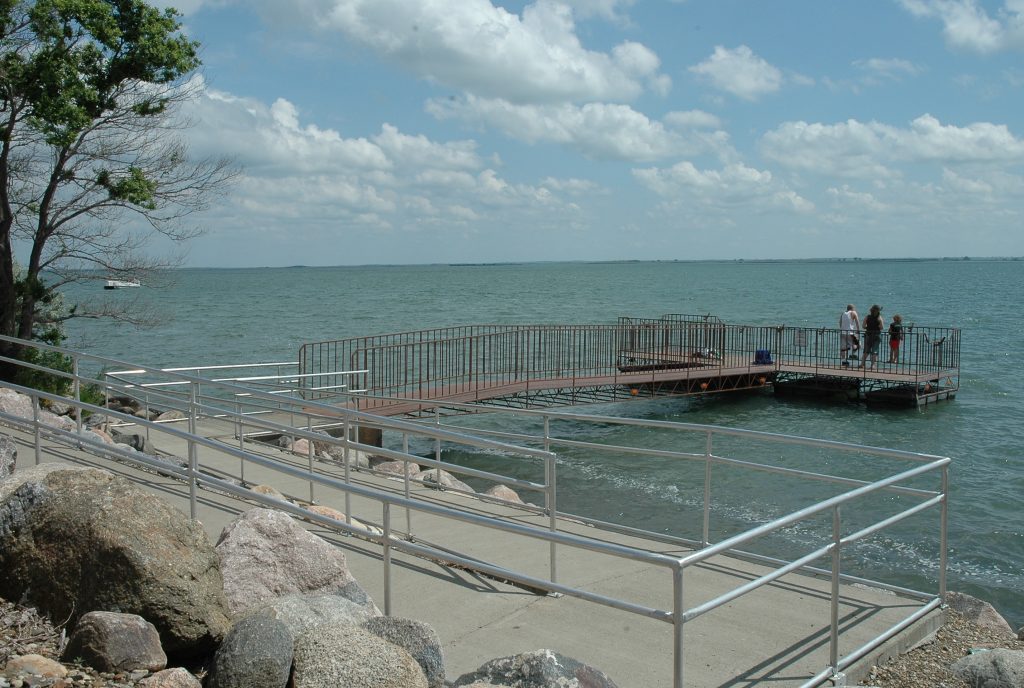

Spring means throngs of migrating waterfowl resonating overhead as they return to nest. It’s wildlife awakening from their winter survival mode.
It’s green grass and early wildflowers as crocuses and other flowers pop seemingly out of nowhere.
And it’s fishing.
Finally, it’s open water fishing.
To Jason Lee, an avid angler and N.D. Game and Fish Department North-Central District Fisheries Supervisor, spring open water fishing also means northern pike. They’re a species native to North Dakota and active right after ice-out, he described – much more active than those sluggish walleye who don’t seem to wake up to spring quite as early as good ol’ pike.
Lee offered some early ice-out suggestions within his district lakes for pike enthusiasts and anglers simply wanting to get out: Try Buffalo Lodge Lake in McHenry County or Ward County lakes such as Rice, Makoti, Hiddenwood, or North Carlson Lake.
Cast spoons or large crankbaits or maybe put a dead smelt or herring beneath a bobber, fishing from shore or off a pier.
And don’t forget Lake Audubon for pike. “The thing about Lake Audubon is that pretty much all of the north half of the lake is (Game and Fish Department) Wildlife Management Area with a lot of public access,” Lee described.
Several boat ramps and fishing piers are available and little North Lake just north of Lake Audubon itself on the north side of McLean County Road 8 has three earthen fishing piers.
The south side of Lake Audubon is closed to open water fishing because it's within U.S. Fish and Wildlife Service Audubon National Wildlife Refuge and provides critical island nesting habitat for birds.
Sleepy walleye wake up as spring inches along, which means Lake Audubon is often a good choice for early season walleye activity.
However, don’t forget about Buffalo Lodge Lake and walleye, Lee offered. Game and Fish Department fish population surveys indicate the lake near Granville has nice walleye numbers, including some pretty fair-sized fish.
Cottonwood Lake a scant distance north of Butte is another quaint lake with some walleye potential.
Smallmouth bass enthusiasts can appreciate the number of smallies in Lake Audubon. Even Hiddenwood Lake has smallmouth bass.
Early each May fisheries biologists stock several community ponds with catchable rainbow trout including the North Dakota State Fair Pond on the state fairgrounds in east Minot and Glenburn Pond in the community of Glenburn.
Later as spring creeps towards summer the State Fair Pond is stocked with catchable-sized perch followed by bluegill in early summer. Glenburn Pond is also stocked with those species when possible.
North-Central fisheries crews began checking dissolved oxygen (DO) levels in several lakes within their district in late February. Most were OK for levels capable of supporting game fish species such as walleye and pike, although a few lakes had lower DO levels than normal.
Lee anticipates some potential fish mortality on lakes where DO levels were too low to support fish such as walleye. Biologists will sample lakes such as McLean County’s Scobey Lake and Coal Mine Lake, Sheridan County, as early as possible this spring to determine the extent of potential fish losses and assess their potential for re-stocking based on water levels, he described.
Both lakes are traditionally shallow and can be prone to low oxygen levels.
Speaking of shallow water and given the fact that much of North Dakota endured varying degrees of drought conditions in 2021, the snow blanketing north-central North Dakota’s Turtle Mountains and the eastern portion of Lee’s North-Central District this past winter was much-welcomed.
Many lakes in those areas could enjoy improved water levels. Some may even fill to more normal elevations, Lee added. However, the southern and western portions of the North-Central District didn’t receive as much snow and Lee isn’t quite as optimistic those lakes could gain much elevation this spring.
That could change with any given rain event, though. Plus, most walleye lakes within the North-Central District were still OK for elevation, Lee added.
Game and Fish Department fisheries biologists will stock those lakes as scheduled and determine if any changes are needed elsewhere based on winter fish mortality.
Time will also tell if a drought persists as North Dakota moves forward into summer.
But it’s spring and spring should always bring optimism and enthusiasm. It should also cause one to gather up some fishing gear and head to the open water.
Reprinted courtesy of The Northern Sentry.